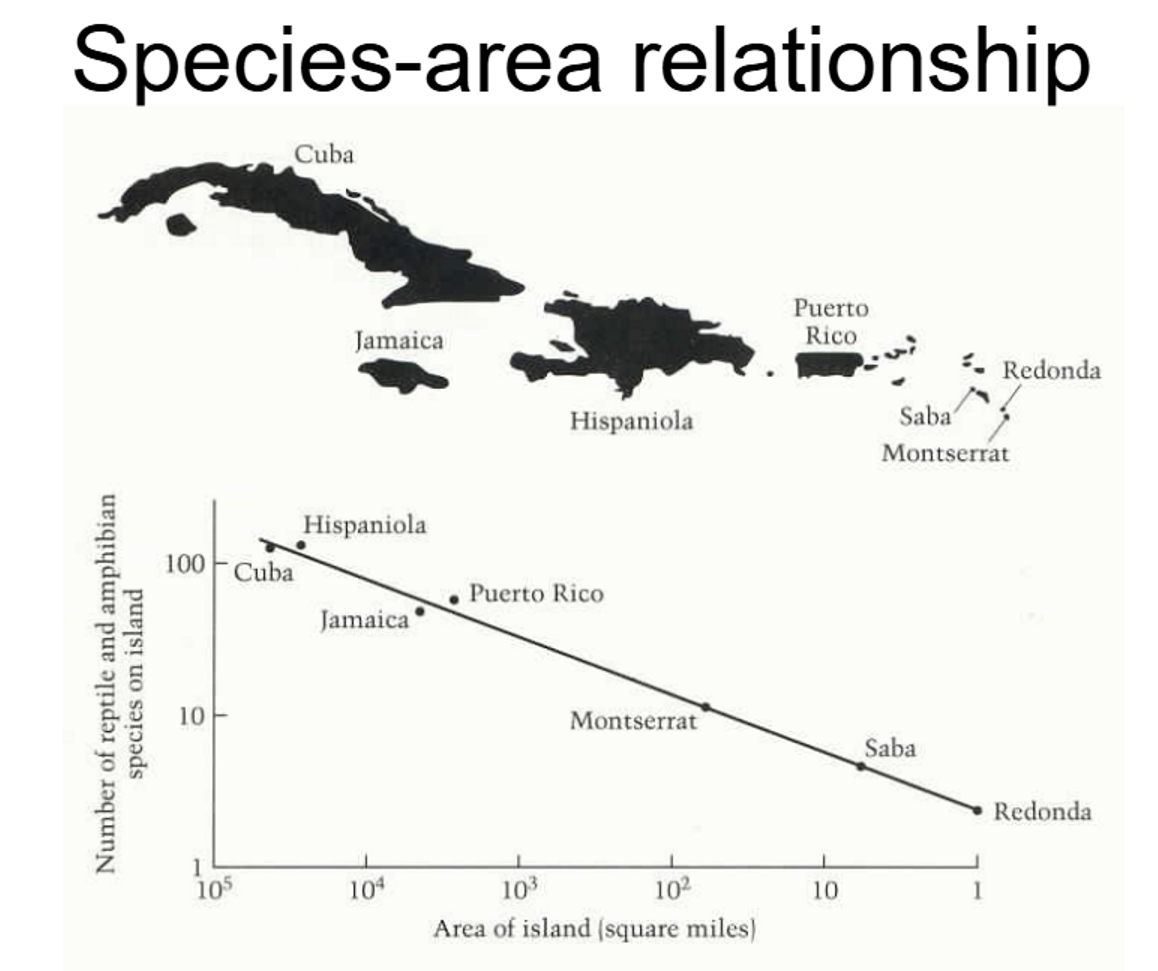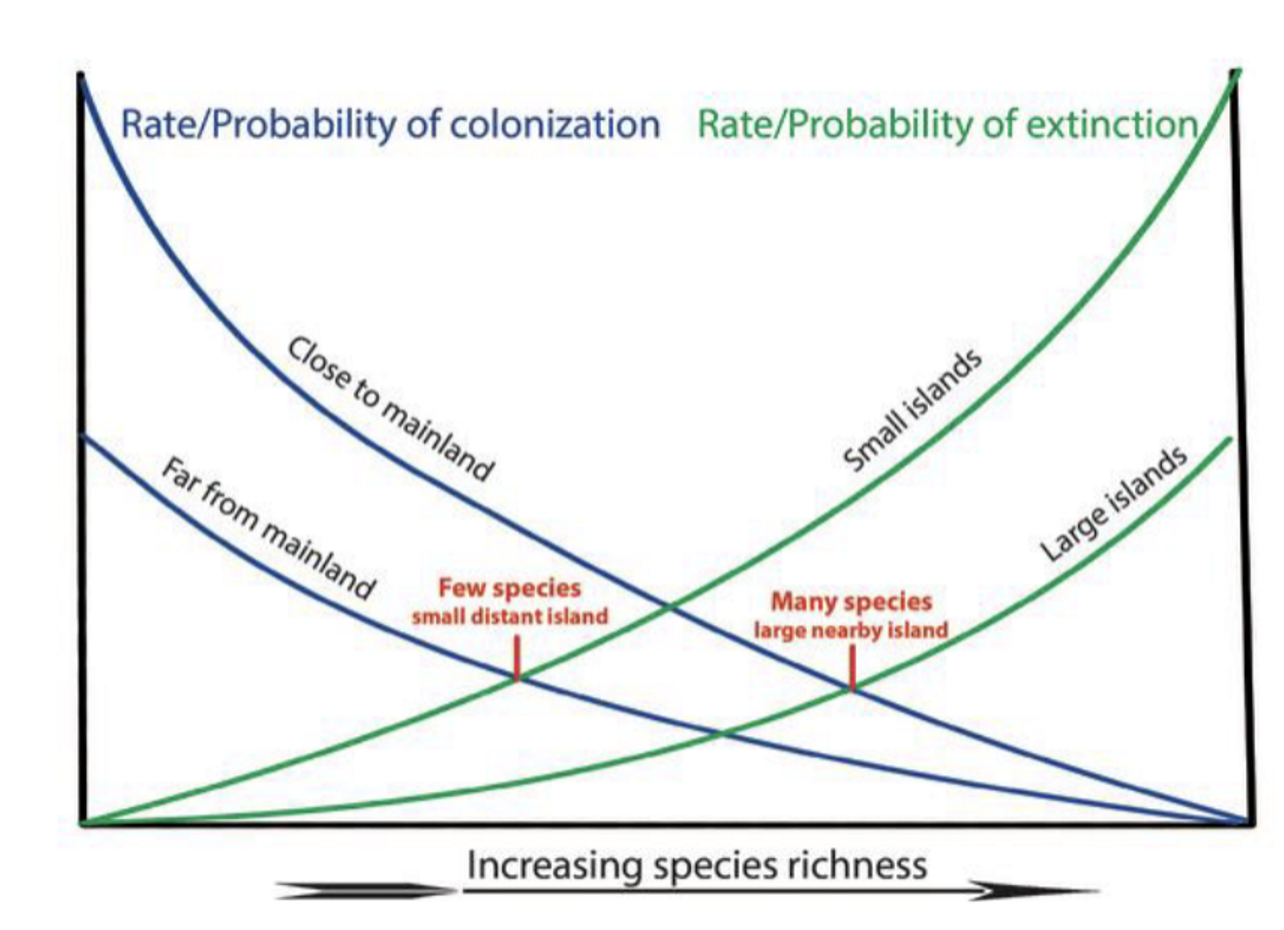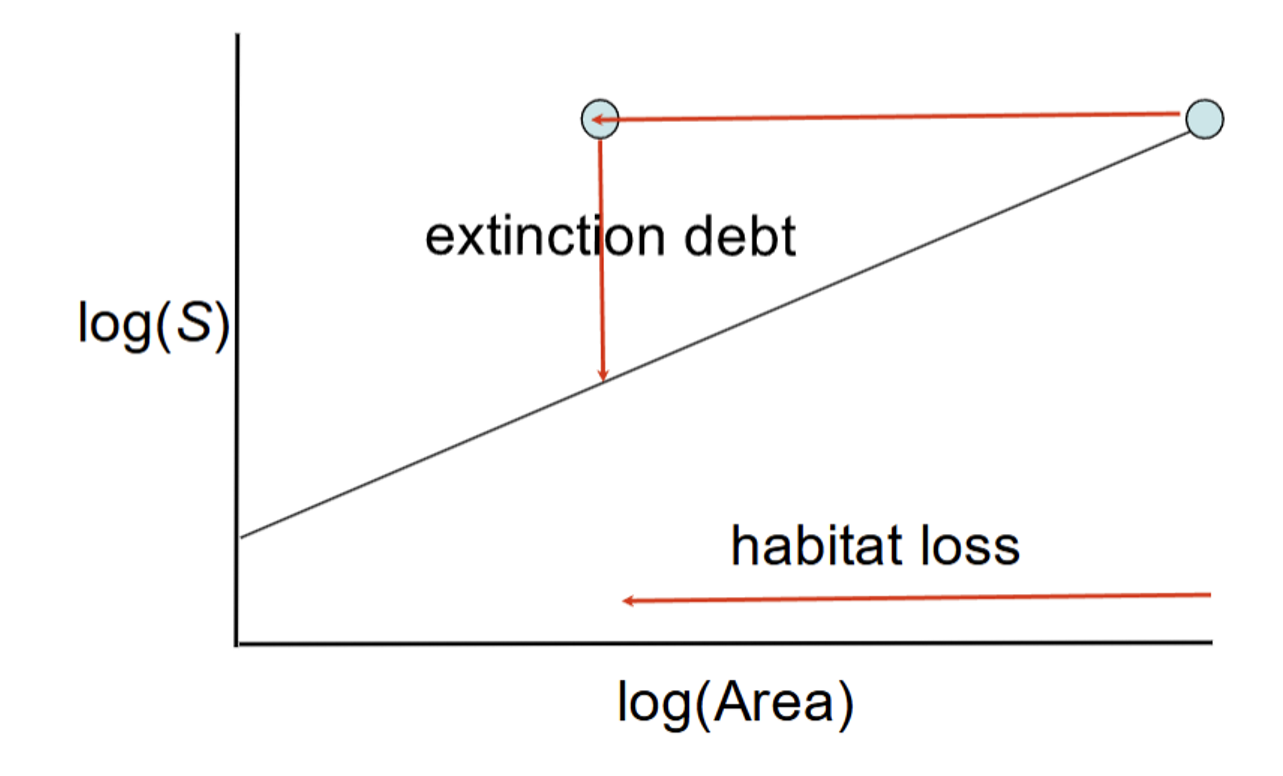Biodiversity and Island Biogeography
1/16
There's no tags or description
Looks like no tags are added yet.
Name | Mastery | Learn | Test | Matching | Spaced |
|---|
No study sessions yet.
17 Terms
Direct Effect
Immediate impact between two species
Ex. Gold eagle eating fox
Ex. Removal of Kangaroo Rats caused house mouse population to increase
Indirect Effect
Impact occurs through a third party
Ex. Pig subsidizing eagle so it can stay on the island, then picking off the fox
Ex. After 7 years of the experiment, one seed was not getting eaten by anybody and slowly took over the enclosures and shaded out the other plants and ants
Extinction
Occurs naturally, but there are three anthropogenic reasons for extinction:
Overexploitation (pigeons, American bison)
Invasive species and ecological homogenization (losing distinctiveness)
Habitat conversion and destruction – biggest reason
Overexploitation
Ex. Passenger pigeons used to be the most abundant species of bird but went extinct
Lived on oak and acorns, the resource base was limited by agriculture
Heavily hunted - Allee Effect
Ex. American Buffalo
Killed as humans moved toward west and to suppress indigenous populations
Invasive Species and Ecological Homogenization
Reducing the distinctiveness between realms when introducing new species to an environment
Ex.
E.O Wilson - discovered the fire ant
Nile perch
Burmese pythons
Chytrid fungus
Habitat Conversion and Construction
Urban area, ranch lands, agriculture
Endemic
Species only occurs in one area
Is extinction a problem?
We don't have names for most organisms - so we don't know whether a species' population is increasing or decreasing
Umbrella Species
Charismatic Megafauna (Manatees, Giant Pandas, Red Pandas)
Species-Area Relationship
Greater area increases species richness - indicates species number reaches an equilibrium
Larger/Closer islands = higher rates of immigration and lower rates of extinction
Small/Isolated Islands = Lowest rates of immigration and highest rates of extinction
Equilibrium Model of Island Biogeography
Explained why big islands had more species
Number of species increases (curve of immigration) → at some point, all the species that can get there, get there (pool of species) → All the niches are filled (extinction/extirpation curve) → number of species on the island is at an equilibrium

Island Biogegraphy Model
Species-area relationship: How big the island is, how far the island is from the colonization source
Species isolation-relationship
Species turnover
Diversity is driven by two factors
Distance from mainland
Island size
Assumptions
Evolutionary history is not important
Characteristics of island habitats is not important
Species Richness
Larger/Closer islands = higher rates of immigration and lower rates of extinction
Small/Isolated Island = Lowest rates of immigration and highest rates of extinction
Rate/Probability of Colonization = Rate/Probability of Extinction - Make sure you know how to draw this!

Genetic Drift
Allele fixation occurs more slowly in large populations; more new mutations in the total population

Extinction Debt
Delayed extinction of species or populations due to past environmental changes, like habitat loss or degradation, that have already had a significant impact on the ecosystem
Extinction Rate
Extinction rates for all these groups are increasing rapidly - 7000x higher than the last extinction
Anthropogenic causes of extinction
If we cause habitat loss, we won’t immediately see lots of extinction
- Lag of time between habitat loss and extinction
- More evident for short lived organisms bc long lived same
generations will be there for longer time